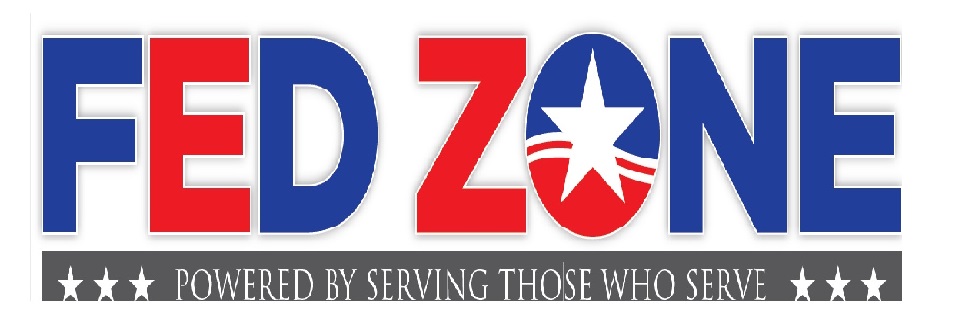Breaking down the rules to keep FEHB for those receiving a survivor annuity

Edward A. Zurndorfer–
If a federal employee dies while enrolled in the Federal Employees Health Benefits (FEHB) program with either self plus one or self and family coverage and all requirements are met, then FEHB program enrollment will continue for eligible family members. Eligible family members include a surviving spouse who receives a survivor CSRS or FERS annuity. This column discusses the rules for survivor annuitants to continue FEHB program family health benefits.
FEHB Program Benefits and Costs
If the FEHB program enrollment for surviving family members continues, eligible surviving family members are entitled to the same benefits and federal government contributions as FEHB program enrolled active and retired employees. In particular, annuitants pay on average 25 to 28 percent of the FEHB program health plan premiums while the federal government pays the other 72 to 75 percent of the health plan insurance premiums. The survivor annuitant’s share of the FEHB program health plan program premium is deducted from his or her CSRS or FERS survivor annuity payment.
Action by A Survivor Annuitant to Continue FEHB Program Enrollment
A survivor annuitant need not take any action to continue their FEHB program enrollment if they meet all the requirements to do so, as explained in the next section.
If a survivor annuitant does not want to continue FEHB program enrollment, then the survivor annuitant must send to his or her retirement system (for CSRS or FERS survivor annuitants, to OPM’s Retirement Office) form SF 2809 (Employee Health Benefits Election Form) in order to cancel enrollment. A survivor annuitant must take this action because the deceased employee/retiree’s employing office will not automatically terminate the enrollment when the employee/retiree dies, unless the employee/retiree has no survivors eligible to continue FEHB program coverage.
Requirements for Continued FEHB Program Enrollment
For surviving family members to continue the FEHB program health benefits after the employee’s or the annuitant’s death, both of the following requirements must be met:
- The deceased employee or annuitant must have been enrolled in either self plus one or self and family coverage at the time of his or her death, and
- At least one family member must be entitled to a survivor annuity (CSRS or FERS).
The family member who will most likely be receiving a survivor annuity is a surviving spouse. If the surviving spouse is the only eligible family member to continue FEHB program health benefits, then the retirement system (CSRS or FERS) will automatically change the enrollment to self only coverage.
Under FERS, a surviving spouse who is entitled to the Basic Employee Death Benefit (BEDB) (a lump sum death benefit payment made to the surviving spouse of a married FERS-covered employee who dies while in federal service – go here for more information) but is not entitled to a survivor annuity because the deceased employee had less than 10 years of federal service at the time of his or her death, may continue FEHB program enrollment by paying the FEHB program health plan premiums directly to OPM. The deceased FERS-covered employee must have had at least 18 months of federal service at the time of his or her death in order for the surviving spouse to be eligible for the BEDB.
Surviving children of deceased employees (with at least 18 months of federal service) or deceased annuitants are eligible for children survivor benefits which include: (1) A monthly annuity check paid by OPM; and (2) FEHB program health benefits in which the FEHB health plan premiums are deducted from the child’s monthly check from OPM. Eligible children are unmarried and under age 18, and children who are between age 18 and 22 and who are full-time students. The monthly annuity check paid by OPM is offset by the child’s Social Security children survivor monthly death benefit. The FEHB program health plan premiums are normally deducted from the OPM monthly annuity. But if the Social Security children survivor benefit completely offsets the OPM monthly annuity benefit, then the child’s FEHB program monthly premiums can be paid directly to OPM.
When the surviving spouse will not receive any survivor benefits because a former spouse has a court-ordered entitlement to a survivor annuity, then the surviving spouse can continue FEHB program coverage under the FEHB program “spouse equity” rules. This assumes that the deceased employee or deceased annuitant had self plus one, or self and family enrollment, at the time of his or her death.
When A Survivor Annuitant Is Eligible for FEHB Benefits Both as An Employee and as A Survivor Annuitant
A federal employee who is married to another federal employee can be enrolled in the FEHB program as a family member under the other spouse’s self plus one or self and family FEHB program enrollment. If the other spouse were to die, then the employee (surviving spouse) is eligible to continue enrollment as a survivor annuitant (the employee is eligible a CSRS or FERS survivor annuity). The employee may subsequently cancel enrollment as a survivor annuitant and re-enroll in the FEHB program as an employee (self only, self plus one or self and family enrollment) because a change in family status has occurred.
The employee may want to consider switching FEHB program enrollment as a surviving spouse to FEHB enrollment as an employee in order to participate in “premium conversion”. “Premium conversion” means having the FEHB health plan premiums deducted before-tax from the employee’s gross salary, rather than having the premiums deducted after-tax from his or her monthly CSRS or FERS monthly survivor annuity check.
A federal employee enrolled in the FEHB program with a self plus one or self and family enrollment may become a survivor annuitant upon his or her federal employee spouse’s death. Or, if both spouses were enrolled in self only FEHB program enrollments but one spouse later separates from service but is not eligible to continue the FEHB enrollment as an annuitant, then that spouse can enroll in the FEHB program as a survivor annuitant should the other spouse die. Eligible individuals can make a change from FEHB program coverage as an employee to coverage as a survivor annuitant within 30 days of separation from federal service.
Deferred Annuity
Because employees in general are not eligible for FEHB program coverage when they choose a deferred retirement. a surviving spouse of a deceased deferred annuitant is not eligible for FEHB program coverage as a survivor annuitant even if he or she had FEHB program coverage as an employee. If the surviving spouse loses coverage as an employee, it cannot be transferred to the survivor annuity.
If an individual is receiving a deferred annuity, then his or her former spouse may be eligible for FEHB program coverage through the FEHB spouse equity provisions.
Death Before Receipt of “MRA+10” or “MRA+20” Postponed FERS Annuity
If a FERS employee dies before his or her postponed “MRA+10” or “MRA+20” FERS annuity begins, then the surviving spouse is considered to be the surviving spouse of an annuitant. The surviving spouse is eligible for FEHB coverage under the same rules that other survivor annuitants must meet and may enroll in the FEHB program when his or her survivor annuity begins.
Opportunities for Survivor Annuitants to Change FEHB Enrollment
Survivor annuitants enrolled in the FEHB program have the same opportunities to change their enrollment in the FEHB program as other annuitants, except when there is a change in family status because of the addition of a child.
A survivor annuitant’s enrollment changes based on the addition of a child can only be made when the child is an eligible family member of the deceased employee or annuitant. The enrollment can be changed from self only to self plus one or to self and family, from one FEHB program health plan option to another health plan or option, or any combination of these changes from 31 days before to 60 days after the addition of the child. The enrollment change will be effective on the first day of the pay period in which the child is born or becomes an eligible family member.
Restoration of Survivor Annuity
If the surviving spouse’s:
- Survivor annuity or Basic Employee Death Benefit was terminated because he or she remarried,
- He or she was covered under FEHB program enrollment immediately before his or her annuity or death benefit terminated, and
- His or her survivor annuity or death benefit is later restored
then he or she may enroll in an FEHB program health plan within 60 days from OPM’s notice of eligibility to enroll.
The restored survivor annuity FEHB enrollment is effective on the later of:
- The first day of the month after OPM receives his or her enrollment request, or
- The date the survivor annuity is restored.
The Basic Employee Death Benefit entitlement can only be restored: (1) At the time that a surviving spouse’s remarriage ends; and (2) He or she provides OPM with a certified copy of the employee’s death notice and the court order termination of the remarriage. The restored FEHB program enrollment is effective on the first day of the month after OPM receives the surviving spouse’s enrollment request and documentation of the end of the marriage.
Surviving Child and Restoration of FEHB Program Benefit
If a surviving child’s:
- Children survivor annuity was terminated because he or she married or ceased being a full-time student, and
- He or she was covered under an FEHB enrollment before his or her OPM child survivor annuity terminated, and
- If his or her OPM child survivor annuity is later restored, then the child may re-enroll in an FEHB program health plan within 60 days of OPM’s notice of eligibility to enroll. The FEHB enrollment is effective on the later of: (1) the first day of the month after OPM receives his or her enrollment request; or (2) the child survivor annuity is restored.
Edward A. Zurndorfer is a CERTIFIED FINANCIAL PLANNER™ professional, Chartered Life Underwriter, Chartered Financial Consultant, Chartered Federal Employee Benefits Consultant, Certified Employees Benefits Specialist and IRS Enrolled Agent in Silver Spring, MD. Tax planning, Federal employee benefits, retirement and insurance consulting services offered through EZ Accounting and Financial Services, and EZ Federal Benefits Seminars, located at 833 Bromley Street – Suite A, Silver Spring, MD 20902-3019 and telephone number 301-681-1652. Raymond James is not affiliated with and does not endorse the opinions or services of Edward A. Zurndorfer or EZ Accounting and Financial Services. The information has been obtained from sources considered to be reliable, but we do not guarantee that the foregoing material is accurate or complete. While we are familiar with the tax provisions of the issues presented herein, as Financial Advisors of RJFS, we are not qualified to render advice on tax or legal matters. You should discuss tax or legal matters with the appropriate professional.
